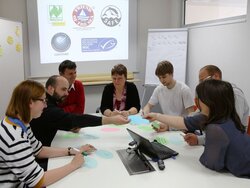Dossier
Methods of consumer and social research
Marie von Meyer-Höfer and Peter Elsasser | 29.06.2022
What motivates consumers to make their purchasing decisions? What opinions and preferences an what knowledge do they have? To find out, social science surveys are indispensable.

In consumer research, different survey methods are used to collect relevant information about society and consumers.
At the beginning of each research process there is a question that is to be investigated. Against the background of this question, a suitable specific method (or several methods) is selected. This is followed by the concept and implementation of data collection and the subsequent analysis, summary and interpretation of the data in the context of the respective research question.
The survey methods used in consumer research can be assigned to the qualitative or quantitative research tradition. Since both traditions have specific advantages, a qualitative or a quantitative approach is recommended depending on the research question and the research objective. Qualitative and quantitative methods are also frequently combined in a mixed-methods design.
Quantitative surveys are used for the standardised collection of information. The aim is to obtain data that is representative of a certain population.
The information collected is usually countable data that is analysed with the help of various statistical evaluation procedures. On the basis of these analyses, summarising, generally valid statements can then be made about consumers or consumer groups. Frequently used formats are:
Qualitative approaches are less concerned with collecting as much information as possible in order to make representative statements based on a sample. Rather, these survey methods aim at reconstructing social structures and contexts of meaning and thus enable a deeper understanding in relation to the research question.
In group discussions, for example, we often heard the statement that farm animals generally receive too much medication, especially antibiotics. By asking specific questions, we were eventually able to establish that this meant only the preventive use of medication. The medicinal treatment of sick animals, on the other hand, was advocated when necessary antibiotics had been used.
Further qualitative approaches are:
- Group discussion
- Exploratives Interview
- Q-Methode











